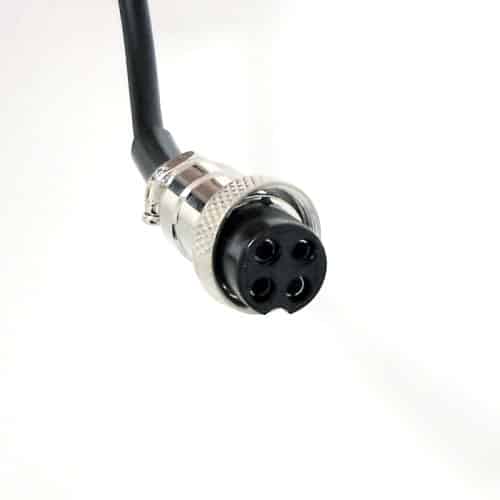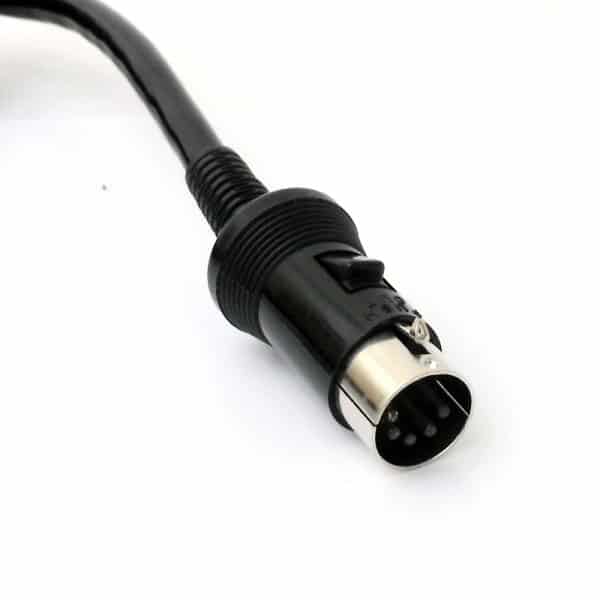Microphone Types and Features
CB World is happy to offer one of the largest collections of CB microphones on the internet!
Whether you are replacing a worn out mic from the manufacturer, or upgrading to one with a little more style or extra features, we are sure to have what you are looking for.
Before you pick a new microphone, there are a few things to consider. First, you want to have the right pin configuration and the correct wiring. Next, what kind of features are you looking for? Below, you will find definitions and explanations that will help you make an educated choice for the best CB microphone for you.
CB Microphone Features
There are several CB microphones available with special features that distinguish them from other microphones. Some, like echo and roger beep, are more for fun. Others, like power and noise canceling features, can help you transmit loud and clear.
Power - Power, or pre-amplified, microphones require a battery and amplify the audio before it gets to the radio. This is useful for those who speak softly, or may have a weaker signal. These microphones can be identified by a volume knob on the mic (usually on the back) and/or a battery compartment. The battery can be accessed either by a slide-open compartment or by opening the shell for the microphone.
Speaker - Speaker microphones have a speaker and microphone component in the handset. These types of microphones are typically used with the radios developed to work with them. The Cobra PMRSM for handheld CB radios and the Uniden BC906W are examples of a speaker microphone.
Echo - Echo microphones, as the name would imply, produce an echo sound effect. They usually have a volume knob similar to a power mic (echo mics are also considered power mics). Some also have a dial to adjust the speed of the echo. Echo microphones have a battery similar to a power mic.
Noise Canceling - A noise canceling microphone helps filter out background noise while you talk. Some of these mics are identifiable by a curved rubber strip on the front of the microphone. It is common to have to hold a noise canceling microphone closer to your mouth when you talk.
Roger Beep - A microphone with roger beep will transmit a beep when you un-key the mic. This lets the listener know you have ended your transmission.

Wireless - A wireless microphone uses a base box connected to the radio to communicate with the wireless handset. Uniden makes a hand held wireless microphone, while Cobra has a wireless microphone headset.
Hands Free - Just like the bluetooth headsets available for your cell phone, a hands free CB microphone allows you to use your radio without the distraction of holding the mic. Cobra makes wired and wireless hands free CB microphones.




Microphone Types (Dynamic versus Electret)
CB microphones are available with two types of cartridges; Dynamic and Electret. A dynamic cartridge is ceramic. This type of cartridge is far more common. An electret cartridge is smaller and less expensive. It is a good idea to know which type of microphone your radio uses. One type typically will not perform well on a radio designed for the other.
CB Microphone Plugs
The most important thing to consider when buying a new mic is the pin configuration. Most newer radios have 4 pin Cobra/Uniden wiring. Some older models have different wiring, though. When you buy a mic, if you're not sure about he wiring, ask a professional before you make a purchase. Some more common pin configurations are shown here:



 Many of the newest Cobra and Uniden CB radios use 6 pin microphone plugs. While these plugs look the same, they are wired differently. This means a 6 pin Uniden microphone will not work in a Cobra radio, and a 6 pin Cobra CB microphone will not work in a Uniden radio. One is not necessarily better than the other. Depending on the radio and microphone features, 6 pins are needed, oftentimes when a channel up and channel down button is on the microphone to control the channels.
Many of the newest Cobra and Uniden CB radios use 6 pin microphone plugs. While these plugs look the same, they are wired differently. This means a 6 pin Uniden microphone will not work in a Cobra radio, and a 6 pin Cobra CB microphone will not work in a Uniden radio. One is not necessarily better than the other. Depending on the radio and microphone features, 6 pins are needed, oftentimes when a channel up and channel down button is on the microphone to control the channels.
Here's a Quick Breakdown:
Standard 4 Pin: Most Cobra, Uniden, Galaxy, Connex, Magnum, Stryker, President radios
4 Pin Electret: Uniden PRO510XL & PRO520XL (see the MK393 microphone)
5 Pin Cobra/Uniden (older generation of Cobra and Uniden): Cobra 148GTL and Uniden Grant
5 Pin President: HR2510 and First Generation Lincoln
6 Pin Cobra Bluetooth: Cobra 29LXBT and Cobra 29LTDBT
6 Pin Uniden: BC880 and BC980
6 Pin RCI/Ranger: 2950, 2970, 2995
Check out our microphone adapters to help you open up your microphone options!
For additional information on Mic Wiring, please visit our CB Microphone Wiring page!
Having troubles with your microphone?
- Make sure the connections are tightened.
- Ensure that the microphone pins on the radio are making a connection with the microphone plug. If need be, you can very gently spread the pins with a small flathead screwdriver.
- Make sure your CB mic is plugged in securely. Check for breaks or damage to the plug and cord. Check the pins in the radio for damage as well.
- Be sure you are pressing the CB microphone button all the way in.
- If it is a power mic or echo mic, make sure there is a battery in it!






